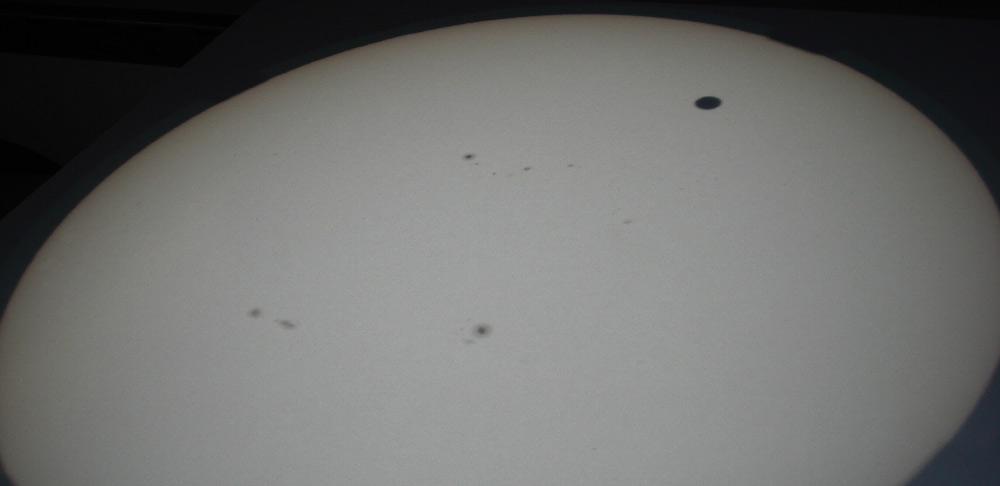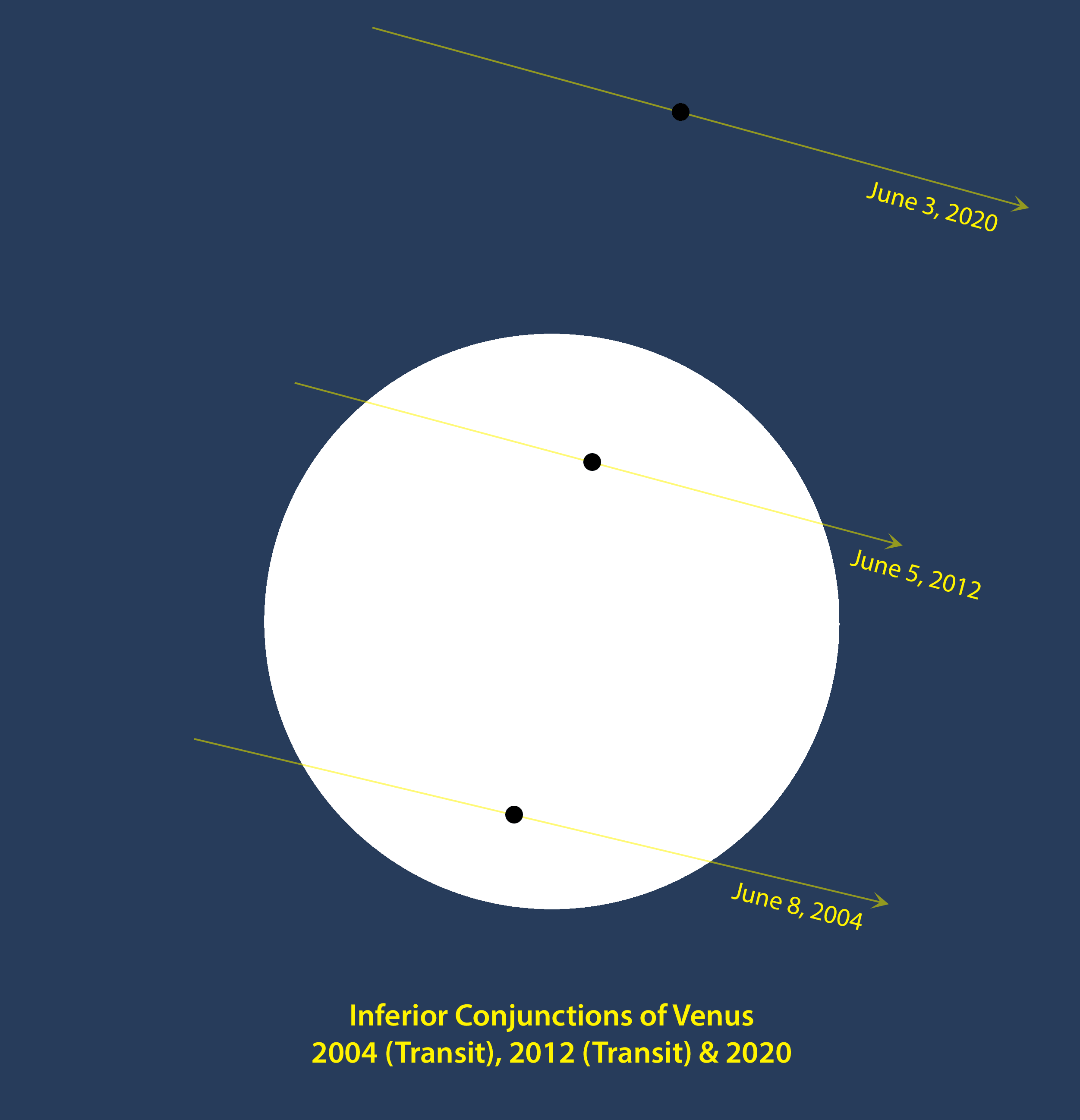
Inferior Conjunction of Venus
June 2020 :
Note: This article may contain outdated information
This article was published in the June 2020 issue of The Skyscraper and likely contains some information that was pertinent only for that month. It is being provided here for historical reference only.
It’s amazing how time is passing; it’s been almost three years since the last US total solar eclipse, and eight years since the last transit of Venus. And, even though a planet passing in front of the Sun isn’t as spectacular looking as our Moon doing so, a transit is a bit different, and quite spectacular to some of us, as it happens so much less often.
We did have a Mercury transit in 2019, which we were able to observe much of it from here, and we will be able to watch another one in 2039. Mercury transits occur about a dozen times each century, but what we can see of the planet is quite small; Venus, on the other hand, with a diameter over twice that of Mercury, and a distance about twice as close to us, forms a nice, easily seen ball. Of course, their occurrences are one of the more unusual cycles in all of science.
Venus transits ignored the entire 20th century, waiting for 2004 to come back. This, in some ways, doesn’t really seem very logical as the planet’s orbit is quite close to a circle, and it just seems as if it should pass in front of – transit – the Sun every time it reaches its closest to us, its inferior conjunction. And, yet..
Venus transits the Sun four times in 243 years. Its previous times were in 1874 and 1882. From there, it waited until June, 2004 and June, 2012. We now have to set our calendars to December, 2117 and December, 2125.

It’s now been eight years since the last Venus transit, and the position of Venus at its nearest to us, June 3rd, is rather close to the Sun, just about .2 of a degree above it. From there, though, we must bid Venus a farewell as the beautiful “evening stat” it has been the past several months; in fact, this was the best evening apparition since the 2012 pre-transit time. But, it is now on its way to a very good morning apparition time, when all of you early risers will have the chance to enjoy our brightest planet for the rest of the year.
The last time we experienced an inferior conjunction of Venus in June, it transited the Sun in 2012. We will not experience another transit of Venus until 2117. This photo of the 2012 transit was taken by Francine Jackson at the Mount Wilson Observatory.



